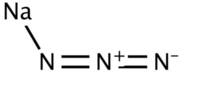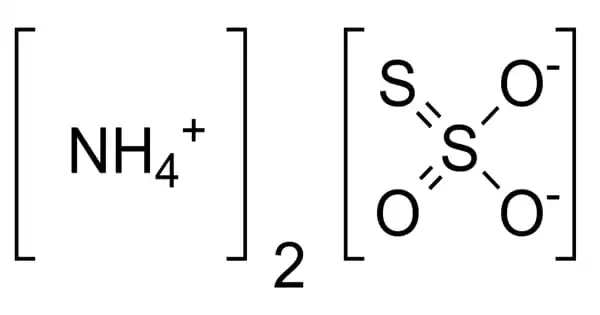Palladium has been the golden word in precious metals in recent years. The demand for this rare silvery white transition metal, which is used in automotive catalytic converters and burgeoning hydrogen fuel cell technology, continues to overwhelm supply, pushing its price per ounce well above gold and silver.
Palladium, as well as other rare, expensive precious metals such as platinum, iridium, and ruthenium, are important in chemical transformations, particularly transition metal catalysis, which has become a crucial tool for putting together complex molecules in the development of pharmaceutical drugs, polymers, and other useful chemicals.
The rarity and high cost of these precious metals has necessitated the development of catalysts from more abundant and generally less expensive transition metals, such as nickel, a palladium cousin.
As a result, the number of innovative catalytic bond-forming reactions employing nickel has increased dramatically in the recent decade.
“We know from the literature that nickel complexes are extremely useful in performing some transformations, maybe better than other transition metals out there,” said Liviu Mirica, William H. and Janet G. Lycan Professor of Chemistry at the University of Illinois at Urbana-Champaign.
“People have gotten very good at optimizing conditions for specific transformations, so we are slowly getting to where nickel could rival palladium in these transformations.”
Nickel (Ni) is a chemical element that is a ferromagnetic metal that belongs to Group 10 (VIIIb) of the periodic table and is highly resistant to oxidation and corrosion. Nickel is a silvery white metal that is robust and harder than iron. It is well-known for its usage in coins, but it is more essential for its various home and industrial applications as a pure metal or in alloys.
We know from the literature that nickel complexes are extremely useful in performing some transformations, maybe better than other transition metals out there. People have gotten very good at optimizing conditions for specific transformations, so we are slowly getting to where nickel could rival palladium in these transformations.
Liviu Mirica, William H. and Janet G. Lycan
Scientists have recently focused on building nickel catalysts that can be directly photoinitiated by light, which has proven to be a very successful field of research, according to Mirica, resulting in reactions that were previously impossible.
They do, however, necessitate the use of a second photocatalyst, which is often made of precious metals such as iridium or ruthenium, which are even more expensive than palladium.
Mirica and postdoctoral researcher Hanah Na recently published a paper in Nature Communications about the development of a completely new tridentate ligand that coordinates with nickel to form a catalyst that can be directly activated by light to form a carbon-oxygen bond without the use of an additional photocatalyst. Many natural compounds, medicines, and agrochemicals have C-O bonds.
Mirica and Na hope that their new class of tridentate pyridinophane ligands (RN3) will lead to the development of new nickel catalysts and will provide a useful platform for comprehensive mechanical research of other nickel-catalyzed chemical events.
“It is a competent catalyst and on top of it, it can actually do this photocatalysis by itself, it doesn’t require these other photocatalysts,” Mirica said. “It opens up many avenues of research that we think could be used for many additional applications.”
Mirica had previously invented an unique four-pronged molecule known as a tetradentate ligand, whose structure resembles the pocket of a baseball glove, and these tridentate pyridinophane ligands (RN3) build on that work. This ligand structure facilitated the formation of C-C bonds while also stabilizing nickel’s higher oxidation states.
“It’s very stable. But all of those intermediates over the past decade have been way too stable. They’re not competent in catalytic applications,” Mirica said.
Then there’s the bipyridyl bidentate ligand framework, which most scientists use in nickel photocatalytic processes since it offers improved reactivity and the flexibility to fine-tune optimization to achieve the desired reaction.
“It’s great for catalytic chemistry but you can’t isolate or see these special nickel species,” Mirica said.
Classic organic chemists, according to Mirica, typically have a certain chemical transformation in mind and experiment with various catalysts, conditions, and additives to enhance it, focusing on a very specific transformation.
“We have a slightly different approach: a metallo-centric approach and in this case nickel is the metal of interest,” he said. “I am interested in being able to design, isolate, characterize nickel complexes with different coordination numbers, different ligand environments, and in different oxidation states, which ultimately will dictate their reactivity.”
This latest ligand structure is somewhere between the other two.
“We open up a coordination site, we open up that nickel center, by removing one of the four nitrogens, to allow other things to bind to it and eventually it allows you to do catalytic activity, but still be able to isolate and characterize intermediates,” he said.
They were able to reveal the major reaction steps and intermediate species in this catalytic cycle for the first time thanks to their novel tridentate ligand. According to the researchers, an in-depth mechanistic understanding of Ni-mediated photocatalysis is required for rational reaction design and optimization of the nickel-mediated chemical process.
Nuclear Magnetic Resonance (NMR), electron paramagnetic resonance (EPR), in situ infrared (IR) spectroscopy, electrochemical and photophysical experiments, and computational investigations were used in their mechanistic analysis.
The photocatalytic cycle is well understood from a mechanical standpoint, but the Ni-mediated redox cycle has remained a mystery. The critical catalytic steps of oxidative addition, trans-metalation, and reductive elimination at the nickel centers have never been directly detected, and paramagnetic Ni(I) and Ni(III) species are expected to be involved in the process but have not been properly explored.
Visible light-mediated photoredox catalysis has made significant contributions to synthetic organic chemistry during the last several decades, according to Na. Developing new approaches and optimizing reaction conditions has traditionally been accomplished by trial and error rather than a complete grasp of the underlying reaction mechanism.
This could be because understanding the underlying chemistry necessitates a significant contribution from the inorganic and organometallic chemistry fields (beyond the scope of synthetic organic chemistry research interests), such as the synthesis and characterization of related metal complexes, as well as the study of their photochemistry and photophysics, according to Na.
“As inorganic and organometallic chemists, we want to contribute to this emerging research field, mostly focusing on unraveling clues to understand underlying reaction mechanisms — which is not much done by organic chemists,” Na said.
“We believe that our work would provide crucial insight into the reaction design and search for new chemical transformations in the burgeoning field of photoredox catalysis, and thus can impact both the organic and inorganic chemistry community.”
The idea, according to Mirica, is to unlock new reactivity that could eventually be useful to organic chemists, who could then use this system to achieve very specific synthetic goals.
“They may not work now as well as the finely optimized or finely tuned systems that people use on a daily basis in an organic lab, but we hope that our new Ni catalysts will be commonly used several years down the line,” Mirica said.
















